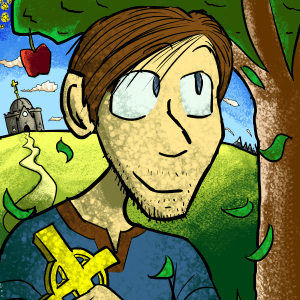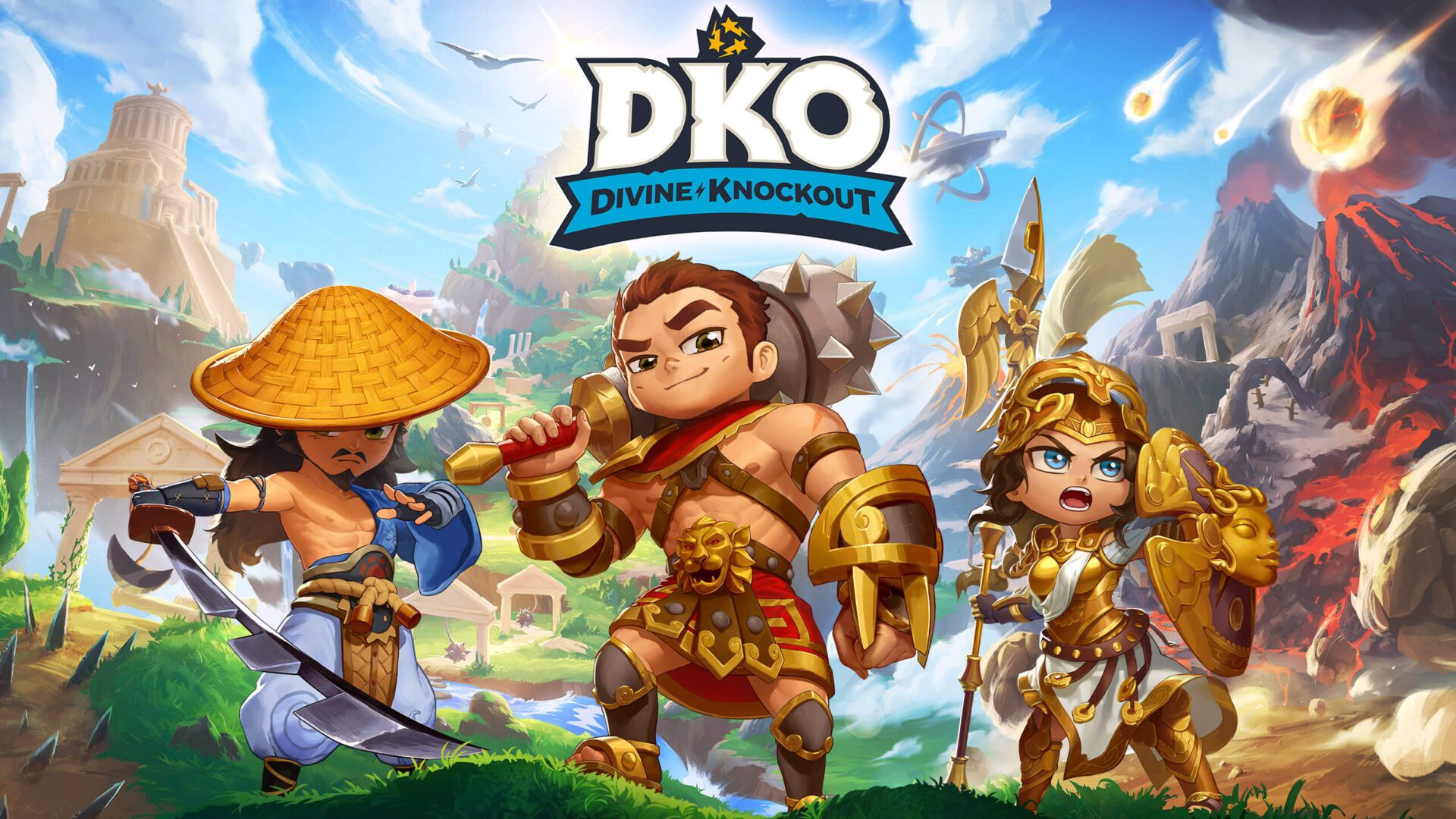
Screenshots used in this review are taken from the game’s Steam page.
They say imitation is the highest form of flattery, but in my experience the end result of such endeavors pales in comparison to the original work. In the realm of video games, I would argue no game is quite as inimitable as Super Smash Bros. Many games have tried to emulate Masahiro Sakurai’s magnum opus, some have even seen financial success, but none of them have ever lived up to the series that started it all. Needless to say it takes a lot for a Super Smash Bros. inspired game to grab my attention, but against all odds one new title has managed to do just that.
Divine Knockout, also known as DKO, is a spin-off of the game Smite from Hi-Rez Studios. Smite is notable for its unique 3rd person action spin on the MOBA genre and large roster of myths and legends from various cultures around the world. DKO is very similar to Smite in some respects not only for its shared roster of characters, but also for applying an unconventional 3rd person perspective to a preexisting genre. I only played Smite for a very short amount of time and while the concept was neat I never got invested enough to stick with it. As for DKO, well, I’ve played enough to write a review about it so let’s dive in and see how it stacks up.
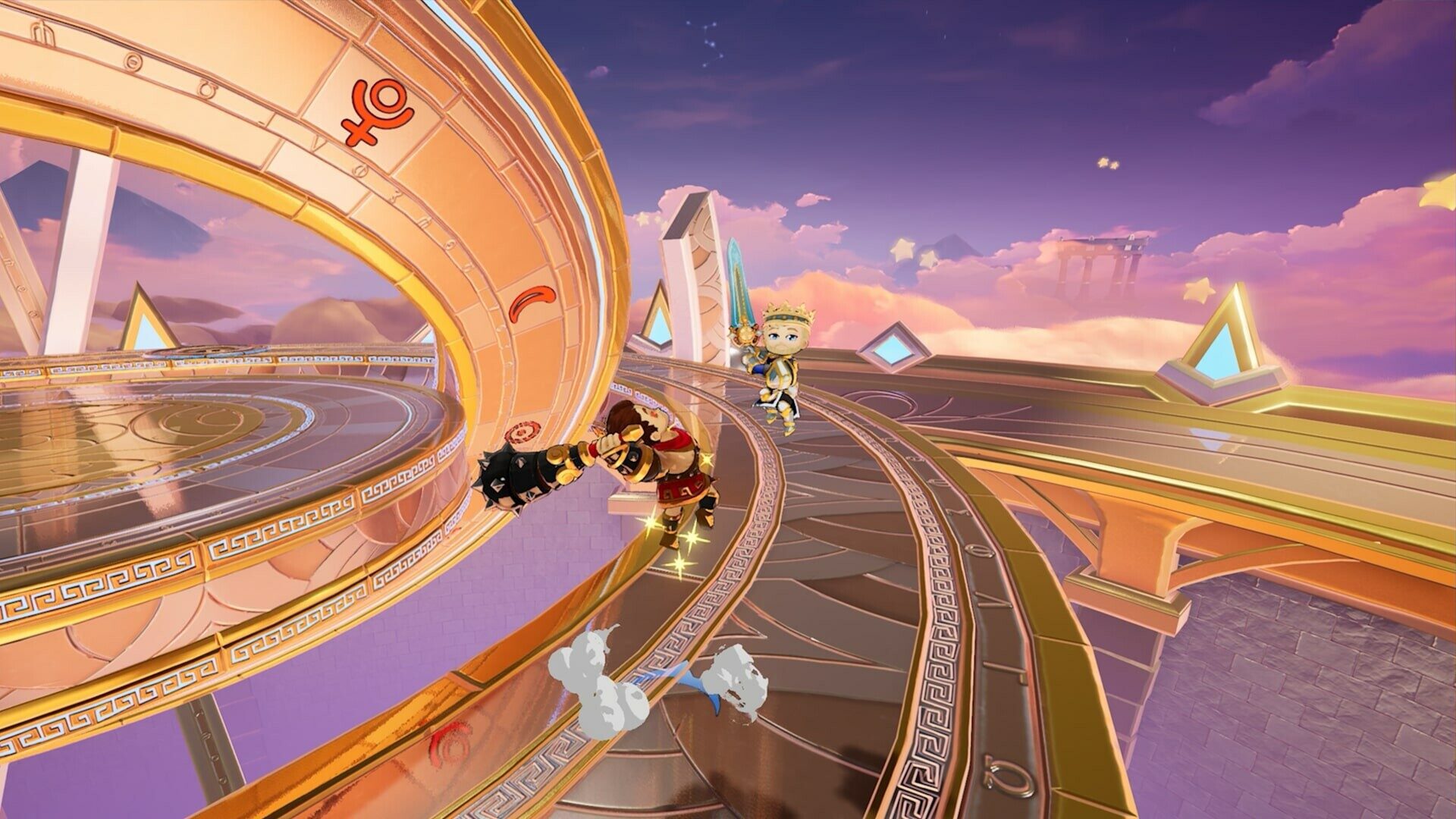
If Arthur had his scabbard of invincibility this fight would already be over.
There’s not much of a storyline to speak of in DKO since multiplayer is the game’s big focus. If you want to know more about any of the playable characters you’ll have to be familiar with the myths and legends they come from. The game’s chibi artstyle gives it a very comedic tone as characters bounce off walls, fall into oversized traps, and fly off into the distance. I personally like this direction for the game as it helps me relax and enjoy the game and avoid getting overly competitive. The only downside is that there isn’t any music during gameplay, only appearing in the game’s menus with generic orchestral tracks that I’m struggling to remember off the top of my head.
There are 4 primary game modes in DKO, each with its own objectives. Knockout is a no nonsense fisticuff frenzy where players compete to knock each other off the stage to score points. King of the Hill has players collect points by fighting for control over small areas of the stage. Coin Blitz is all about collecting coins scattered about the stage and depositing them in a chest while attacking other players to steal their coins. Finally there’s Oddball in which points are awarded to the player wearing a large crown that buffs their attacks, but disables their strongest movement abilities. Overall I’d say it’s a decent variety of game modes that went a long way towards keeping the game a fresh experience, though I do admit that I like some game modes better than others. I’ll take Coin Blitz over Oddball any day of the week.
No matter which mode you’re playing in however, the stages and characters will remain consistent. The stages consist of large arenas littered with traps and hazards themed around the same mythologies the characters come from. Generally speaking these stages don’t have too much verticality which encourages most engagements to be fought on the ground rather than the air(unless you’re playing as Amaterasu of course, but we’ll get to that). Actions characters can take at any time include light attacks, heavy attacks, and jumping. Light attacks are strings of strikes meant primarily to deal damage while heavy attacks are big slow swings for knocking opponents away. Jumping allows the player to recover from being knocked back, perform aerial attacks, and avoid certain attacks.
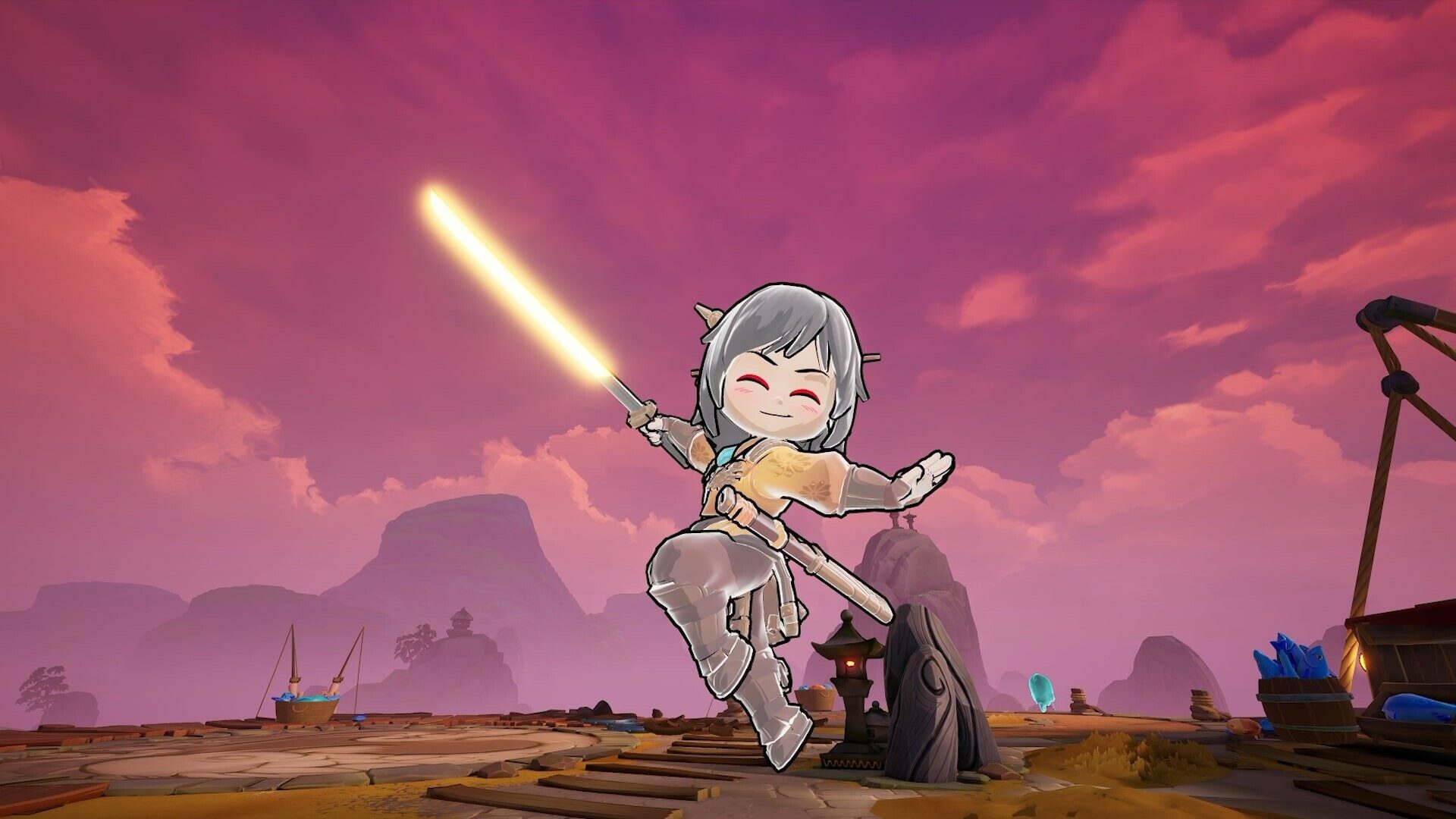
This is the face Amaterasu makes when she’s about to kill you. Every kawaii anime waifu has her thorns.
Other actions such as dodging and special moves are limited by a cooldown system similar to those found in MOBAs like Smite. The dodge in particular is an incredibly useful tool which provides full invincibility while quickly dashing in a chosen direction so using it at just the right moment can turn almost any situation in your favor. Special moves are character specific abilities that define their playstyle. The aforementioned Amaterasu specializes in knocking opponents into the air and dealing lots of damage. Hercules is an all-rounder with a tool for just about every scenario. My man King Arthur (the only character with any roots in Catholicism) is all about defense with lots of ways to slow down or even stun opponents. Odds are if one character doesn’t click with you, there’s bound to be another more suited to your sensibilities.
There is a little overlap between most characters though. For instance every character has at least one special move specifically for moving across long distances quickly so they can jump back onto the stage and if they get knocked off. All characters also have an Ultimate Ability which must be charged up over time in order to be used, but can be game changing when used effectively. That’s just about everything there is to say about the gameplay, so does it live up to the legacy of Super Smash Bros.? I would say no, but that’s because I feel the game is more its own thing even if the influence is clearly there. I’m not saying DKO is going to be the next big thing in fighting games, but the fact that it seems to stand on its own merits certainly gives it more credibility than other platform fighters.
This is all well and good, but I’m sure the obvious question on everyone’s mind is why a Catholic would take interest in a game all about pagan gods? Well personally speaking as a casual enjoyer of medieval literature I was drawn in mostly by the presence of King Arthur, but in all seriousness the question is addressed more towards the other playable characters like Athena and Thor. Obviously we shouldn’t engage with these mythological figures spiritually, but I would argue that if we approach them simply as stories they can provide great insight into the history and values of ancient cultures. Besides, DKO’s depictions of these pagan gods are very cartoony and do not invoke a sense of reverence so as far as I’m concerned the spiritual risks are minimal.
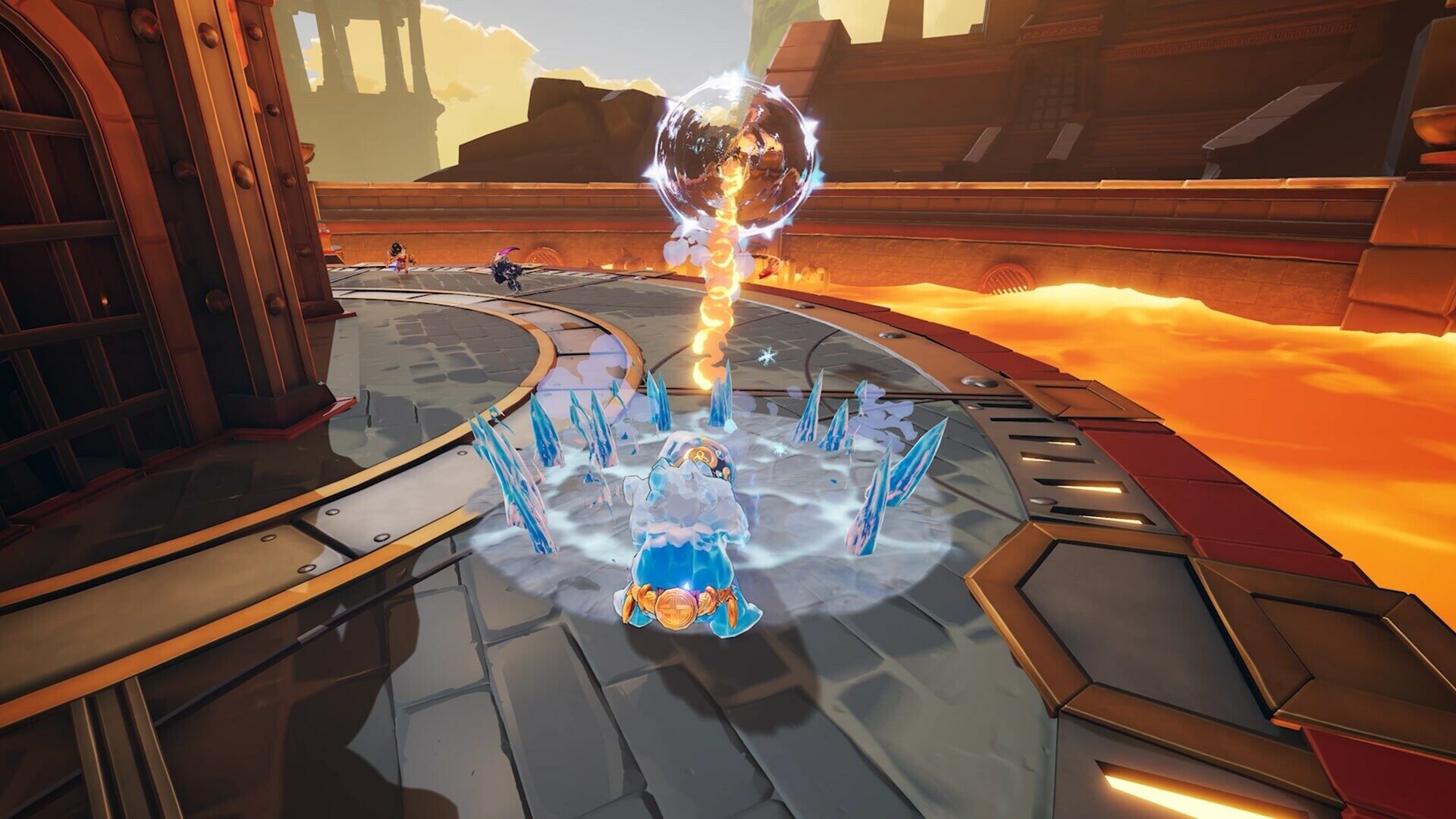
What killed the dinosaurs? THE ICE AGE!
Thus we have reached the end of my review, but at the same time this is just the beginning for Divine Knockout. As of time of writing the game is currently in “Preseason” where the developers are still fine tuning the game’s characters, stages, and game modes in preparation for its proper launch. DKO is looking to follow the same live service model as Hi-Rez’s other games with consistent content updates and balance patches so with a big enough audience this game could last for years to come. I’ve certainly enjoyed my time with the game, especially when playing in a group, and would gladly revisit the game every once in a while. Super Smash Bros. will always be the gold standard for platform fighters, but it’s good to know there’s still room for innovative games like DKO.
Scoring: 70%
Gameplay: 3/5
Visuals: 3/5
Sound: 3/5
Replayability: 5/5
Morality and Parental Warnings: Divine Knockout is focused primarily on combat between players using all manner of weapons and super powers. The violence is very slapstick and cartoony with little to no blood or dismemberment. The game’s characters are mostly based on pagan gods from Greek/Roman, Norse, Chinese, and Japanese mythology.
